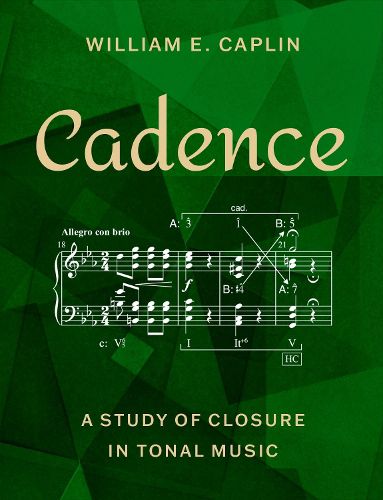Readings Newsletter
Become a Readings Member to make your shopping experience even easier.
Sign in or sign up for free!
You’re not far away from qualifying for FREE standard shipping within Australia
You’ve qualified for FREE standard shipping within Australia
The cart is loading…






Cadence is a comprehensive examination of how formal units in European art music of the tonal era achieve closure. The book brings together the author's decades-long investigations into cadence, a compositional device that is readily experienced both by musicians and non-musicians, but one that has proven intractable to clear and precise theoretical formulation. Rooted in Caplin's broader theory of formal functions, the book first develops concepts of cadence for music of the high classical style and then extends these ideas to gauge cadential practice in earlier and later style periods. Throughout the study, various manifestations of cadence are defined in terms of their morphology (their harmonic and melodic profiles) as well as their function (the specific formal contexts in which they are deployed). Cadence introduces a host of theoretical concepts illustrated by copious musical examples, all of which contain extensive analytical annotations of harmony, melody and form. Though the book is addressed primarily to music theorists, the many issues of compositional practice raised in this study will resonate with the interests of composers, historians, and performers alike.
$9.00 standard shipping within Australia
FREE standard shipping within Australia for orders over $100.00
Express & International shipping calculated at checkout
Cadence is a comprehensive examination of how formal units in European art music of the tonal era achieve closure. The book brings together the author's decades-long investigations into cadence, a compositional device that is readily experienced both by musicians and non-musicians, but one that has proven intractable to clear and precise theoretical formulation. Rooted in Caplin's broader theory of formal functions, the book first develops concepts of cadence for music of the high classical style and then extends these ideas to gauge cadential practice in earlier and later style periods. Throughout the study, various manifestations of cadence are defined in terms of their morphology (their harmonic and melodic profiles) as well as their function (the specific formal contexts in which they are deployed). Cadence introduces a host of theoretical concepts illustrated by copious musical examples, all of which contain extensive analytical annotations of harmony, melody and form. Though the book is addressed primarily to music theorists, the many issues of compositional practice raised in this study will resonate with the interests of composers, historians, and performers alike.